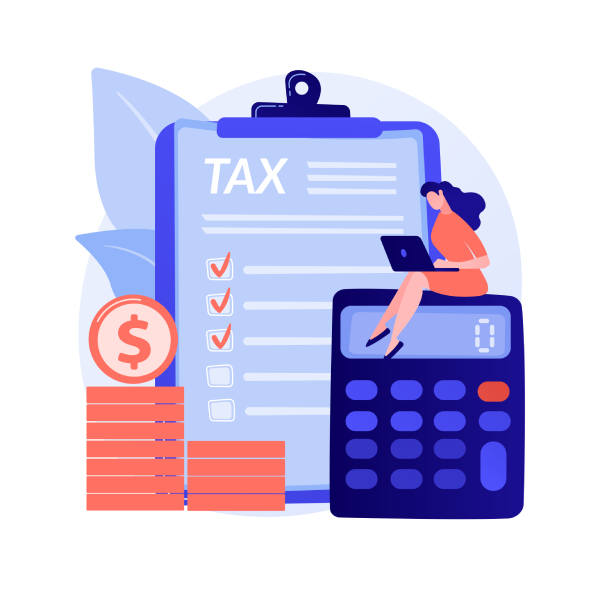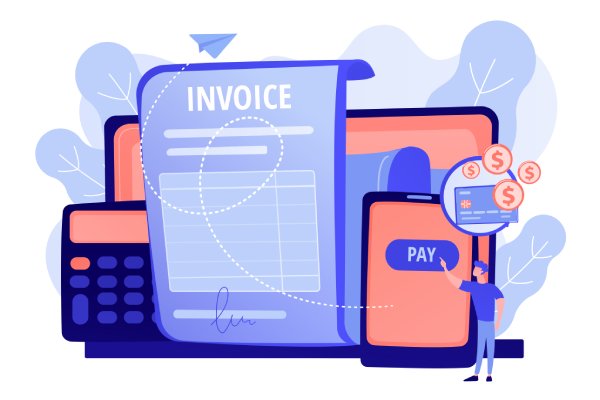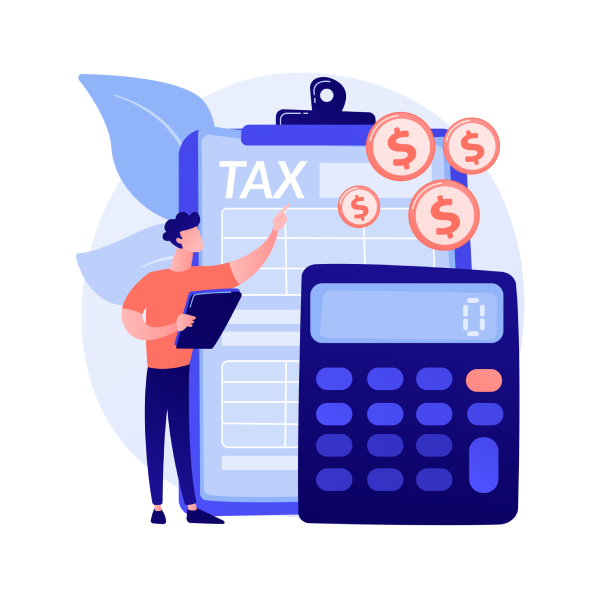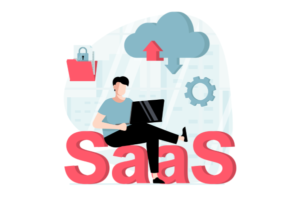On December 8, 2022, the European Commission took a significant step towards modernizing and making the EU’s Value-Added Tax (VAT) system more resilient to fraud through the VAT in the Digital Age proposal (ViDA).
The aim is to leverage modern technology to address the significant loss of VAT revenues experienced by Member States – a staggering €93 billion in 2020, according to the 2022 VAT Gap report.
A considerable portion of this deficit is directly linked to VAT fraud associated with intra-EU trade, tax evasion, tax avoidance and optimization practices. Moreover, the current VAT arrangements can be burdensome for businesses, particularly SMEs, scale-ups, and those operating cross-border.

The proposal aims to tackle VAT-related challenges arising from the growth of the platform economy and to make the VAT system more efficient for businesses. It suggests the following measures:
- Standard Digital Reporting Requirements and e-invoicing on intra-community transactions
- New VAT treatment of the platform economy
- Reduce VAT registration requirements by introducing a single VAT Registration
Below we dive deeper into these critical areas and explore their implications for eCommerce businesses, alongside actionable steps that businesses can take to prepare for these changes.
Introducing Single VAT Registration Across The EU
The European Commission is striving to modernize the EU VAT rules through its “ViDA initiative” – an action plan for fair and simple taxation across the EU. The proposed package aims to increase VAT efficiency while decreasing VAT fraud.
Key Proposal – The 3 Directions
The key proposals in the VAT in the Digital Age package encompass three critical areas:
- Real-time digital reporting based on e-invoicing for cross-border businesses in the EU. This action aims to tackle VAT fraud, lower administrative and compliance expenses, and unify the current national systems throughout the EU.
- New regulations for VAT in passenger transportation and short-term accommodation platforms, making them responsible for collecting and remitting VAT – further unifying the EU and simplifying VAT compliance for SMEs.
- The introduction of a single VAT registration to allow businesses to register only once for VAT purposes for the entire EU. This will be done through a single online portal in one language, streamlining the process and making VAT collection more efficient.
E-Invoice – Phases
A critical aspect of the proposal is the implementation of e-invoicing, which will occur in two phases. The Commission defines an “e-invoice” as any invoice issued, transmitted, and/or received in a structured electronic format which allows for its automatic and electronic processing.
- During the first phase, which starts on January 1, 2024, Member States will have the option to impose e-invoicing obligations following the European standard EN 16931. Existing e-invoicing models that currently require mandatory pre-authorization or verification will be discontinued by the beginning of 2028.
- In the second phase, starting January 1, 2028, e-invoicing in a structured format will become the default standard, with exceptions permitted by the Member States but not for transactions subject to e-reporting, such as intra-EU B2B Goods and Services . This proposal is a step forward in harmonizing the use of current technologies and modernizing the EU VAT rules.

Digital Reporting Requirements (DRR)
In parallel with the rolling out of the second phase of e-invoice, there will be some new rules for businesses that trade across EU borders. The old system, which was called recapitulative statements, is being replaced by a new Digital Reporting System (DRR). This change is being made to help prevent missing trader fraud.
The DRR will cover the same transactions as the old system, but it will also include supplies of goods and services subject to the domestic reverse charge mechanism.
Under the new system, businesses must submit the same data as before, but it will be on a transaction-by-transaction basis, rather than aggregated by customer. This data will need to be sent electronically, using a system provided by the relevant EU government.
Member States will have the option to choose additional formats on how they want to receive the data, as long as they comply with the current European Standard. Businesses can submit their data themselves, or they can use a third party to do it for them.
It is possible that some EU countries may also require businesses to use the DRR for domestic transactions, not just cross-border ones. The aim is for all EU countries to have the same digital reporting requirements by 2028.
Platform Economy
The European Commission is also set on confronting the challenges of the platform economy.
If you’re not aware, “platform economy” refers to businesses that operate through digital platforms such as Airbnb and Uber. Proposed changes could impact how these companies are taxed. Specifically, the changes clarify that services provided by these platforms to non-taxable persons will be considered intermediary services (not electronically supplied services) and will be subject to VAT in the EU.

Additionally, the platforms will be required to charge VAT on accommodation and passenger transport services if the supplier doesn’t do so themselves.
Consumers who use these platforms may see slightly higher prices due to the added VAT, while businesses that operate through these platforms must stay up-to-date on these changes to ensure compliance with new regulations.
It’s important to note that these changes are still in the proposal stage and aren’t set in stone yet. However, it’s always wise to stay aware of potential changes that could impact the way we do business in the digital age.
eCommerce
Starting from January 1st, 2025, a new system will be put into place that will make it easier for businesses to sell and transport goods within EU member states.
This change is expected to reduce the red tape associated with cross-border trade and ensure that businesses have a fair chance to compete in the marketplace.

One of the changes will be the extension of the scope of the Union OSS scheme, in order to include certain B2C supplies of goods.
Another significant change is introducing a mandatory reverse-charge mechanism for B2B transactions where the supplier is not established in the country where VAT applies and the customer does have a VAT identification number in that country.
Finally, a new broader OSS simplification scheme for transfers of own goods will be introduced which will cover also the transfer of own goods from one Member State to another during the course of sales to consumers.
Overall, these changes are designed to create a more equitable and transparent eCommerce system for all parties involved. As a business owner, staying up-to-date on these changes is essential to ensure that you’re making informed decisions.
Steps To Follow
What Businesses Can Do To Prepare For These Changes
Here are some steps to follow to ensure that your business is ready for the changes to come:
Step 1: Stay Updated
As with anything in business, it’s crucial to stay up-to-date about the upcoming changes being proposed by the Commission. To manage these changes effectively, companies should consider using specialized software or seeking external support to help manage the increasing number of e-invoicing and digital reporting obligations – being prepared and adhering to the new regulations is essential for compliance.
Step 2: Assess the Impact
It’s crucial to evaluate how these regulations will impact your operations in each Member State.
If you provide short-term accommodations or passenger transportation services, it’s imperative that you thoroughly analyze the potential implications of the “deemed supplier” rules on your VAT processes.
This also applies to online marketplaces that sell goods within the EU and transport merchandise between countries.
Step 3: Review Existing VAT Registrations
If you’re selling products online, it’s important to understand how the expanded OSS (One Stop Shop) scheme could affect your VAT registrations. You might even find that you no longer need some local VAT registrations and can consider getting rid of them.
Plus, if you’re moving your own stock within the EU, the new OSS scheme could be a big help.
Step 4: Anticipate Changes
If your business supplies B2C or B2B within the EU countries, it’s essential to note the proposed mandatory reverse-charge mechanism for such supplies. It’s crucial to anticipate these changes and adjust your business processes accordingly.
New Obligations For Taxpayers Involved in Intra-EU Trade
As a final note, it’s important to remember that all these new changes will have a significant impact on business involved in Intra-EU Trade. The number of EU Member States that will introduce e-invoicing (and digital reporting) obligations will increase in the next few years. Businesses will have to keep track of these developments, anticipate the impact in the business for the countries in which they operate, and how they can implement all these additional obligations.

Conclusion
The proposed changes to the EU’s VAT system aim to modernize and streamline processes, leveraging digital technology to combat VAT fraud and simplify business compliance. With the integration of e-invoicing, updated VAT rules, and single VAT registration, businesses must understand these changes and prepare accordingly.
As everything moves online, it’s crucial to keep up with new developments to ensure your business runs smoothly and successfully. Remember, being prepared and being flexible are the secrets to doing well in this ever-changing digital world.
- SEO Powered Content & PR Distribution. Get Amplified Today.
- PlatoData.Network Vertical Generative Ai. Empower Yourself. Access Here.
- PlatoAiStream. Web3 Intelligence. Knowledge Amplified. Access Here.
- PlatoESG. Automotive / EVs, Carbon, CleanTech, Energy, Environment, Solar, Waste Management. Access Here.
- BlockOffsets. Modernizing Environmental Offset Ownership. Access Here.
- Source: https://blog.2checkout.com/european-digital-vat-proposal-einvoicing-reporting/
- :is
- :not
- :where
- $UP
- 1
- 1st
- 2020
- 2022
- 2028
- 32
- 8
- a
- About
- ABSTRACT
- accommodation
- According
- accordingly
- across
- Action
- added
- Additional
- address
- affect
- age
- aim
- aims
- Airbnb
- All
- allow
- allows
- alongside
- also
- always
- an
- and
- Another
- anticipate
- anything
- appointment
- ARE
- arrangements
- AS
- aspect
- assess
- associated
- Automatic
- AVG
- aware
- B2B
- B2C
- based
- BE
- become
- Beginning
- being
- between
- Big
- Billion
- borders
- broader
- browser
- business
- business owner
- business processes
- businesses
- but
- by
- calculating
- called
- Campaign
- CAN
- certain
- challenges
- Chance
- change
- Changes
- charge
- Choose
- Collecting
- collection
- come
- commission
- Companies
- compete
- compliance
- comply
- concept
- Consider
- considered
- Consumers
- could
- countries
- country
- course
- cover
- create
- critical
- critical aspect
- cross-border
- crucial
- Current
- Currently
- customer
- data
- December
- decisions
- deeper
- Defines
- deloitte
- designed
- developments
- digital
- digital age
- digital world
- directly
- do
- does
- Doesn’t
- doing
- Domestic
- done
- due
- during
- each
- easier
- EC
- ecommerce
- economy
- effectively
- efficiency
- efficient
- Electronic
- electronically
- encompass
- ensure
- Entire
- equitable
- essential
- established
- Ether (ETH)
- EU
- Europa
- European
- european commission
- Even
- ever-changing
- everything
- existing
- expanded
- expected
- experienced
- explore
- external
- EY
- fair
- few
- final
- Find
- First
- follow
- following
- For
- format
- Forward
- fraud
- from
- further
- gap
- getting
- goods
- Government
- Growth
- Have
- help
- higher
- How
- However
- HTML
- HTTPS
- Identification
- if
- Impact
- imperative
- implement
- implications
- important
- in
- include
- Income
- Increase
- informed
- integration
- intermediary
- Internet
- into
- introduce
- introduced
- introducing
- Introduction
- involved
- IT
- ITS
- just
- Keep
- Leverage
- linked
- local
- Long
- longer
- loss
- made
- make
- Making
- manage
- mandatory
- marketplace
- max-width
- May..
- measures
- mechanism
- member
- missing
- models
- Modern
- monthly
- more
- more efficient
- Moreover
- moves
- must
- National
- Need
- net
- New
- next
- no
- number
- obligations
- occur
- of
- Old
- on
- once
- ONE
- ones
- online
- only
- operate
- operating
- Operations
- Option
- or
- order
- Oss
- out
- own
- owner
- package
- Parallel
- particularly
- parties
- party
- payment
- PC
- phase
- Place
- plan
- planning
- platform
- Platforms
- plato
- Plato Data Intelligence
- PlatoData
- Portal
- possible
- potential
- Prepare
- prepared
- prevent
- Prices
- process
- processes
- processing
- Products
- Programmers
- promotion
- proposal
- proposed
- provided
- purposes
- put
- rather
- rating
- receive
- Red
- refers
- Registration
- regulations
- relevant
- remember
- replaced
- Reporting
- Requirements
- responsible
- reverse
- review
- Rid
- Rolling
- rules
- runs
- sales
- same
- scheme
- scope
- score
- Second
- see
- sell
- Services
- set
- Shop
- Shopping
- short-term
- should
- significant
- simplifying
- single
- SMEs
- smoothly
- So
- some
- specifically
- standard
- Starting
- starts
- State
- States
- stay
- Step
- Steps
- Still
- stock
- STONE
- Stop
- streamlining
- structured
- subject
- submit
- Successfully
- such
- Suggests
- supplied
- system
- Systems
- Tablet
- tackle
- Take
- tax
- taxpayers
- Technologies
- Technology
- than
- that
- The
- their
- Them
- themselves
- There.
- These
- they
- this
- thoroughly
- those
- Through
- throughout
- to
- took
- towards
- trade
- trader
- Transactions
- transfer
- transfers
- transparent
- transport
- transportation
- two
- Uber
- understand
- up-to-date
- upcoming
- updated
- use
- using
- VAT
- votes
- want
- Way..
- we
- WELL
- which
- while
- WHO
- will
- windows
- WISE
- with
- within
- world
- years
- yet
- you
- Your
- zephyrnet






